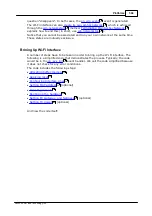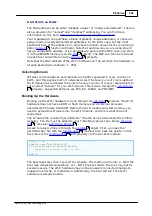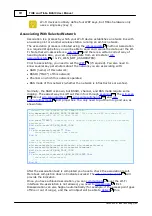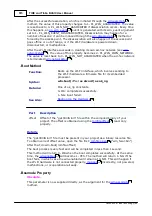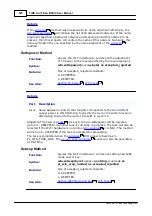
512
Platforms
©2000-2008 Tibbo Technology Inc.
When the wln is in the associated state, the
read-only property is
constantly updated with the strength of the signal being received from the
currently used wireless network. Do not confuse this with the
property which returns the signal strength of a particular network obtained in the
.
Creating Own Ad-hoc Network
Rather than
with somebody else's network, the Wi-Fi interface can
create an ad-hoc network of its own and have other devices associate with you.
This is done by using
method. Note that wln.networkstart is a
and there is a certain correct way of handling tasks. Also, you can only
create your own network from an idle state (
= 0-
PL_WLN_NOT_ASSOCIATED).
To start a network, you only need to make up your mind regarding its name and
operating channel:
'take control and run our own network
wln.networkstart("VOICEOFREBELS",6)
While
wln.task<>PL_WLN_TASK_IDLE
Wend
Communicating via Wln Interface
Actual data exchange over the Wi-Fi link falls outside the responsibilities of the wln
object. This is the task of the
object. This object has a set of properties
that define whether a particular socket will be listening on the Wi-Fi interface (
property), establish an outgoing connection through the
Wi-Fi interface (
property). See also:
read-only property.
Disassociating From the Network
To disassociate from the network, use the
method. Note that
wln.disassociate is a
and there is a certain correct way of handling
tasks.
'disassociate now
wln.disassociate
While
wln.task<>PL_WLN_TASK_IDLE
Wend
Disassociation can happen automatically, for example, when the access point goes
offline or out of range. This will be
by the wln object.
Terminating Own Ad-hoc Network
to terminate your ad-hoc network. We are talking about
the network your hardware has created -- you can't terminate an ad-hoc network
of someone else. Note that wln.networkstop is a
and there is a certain
correct way of handling tasks.
524
526
509
511
521
500
514
274
327
359
331
518
500
513
522
500







